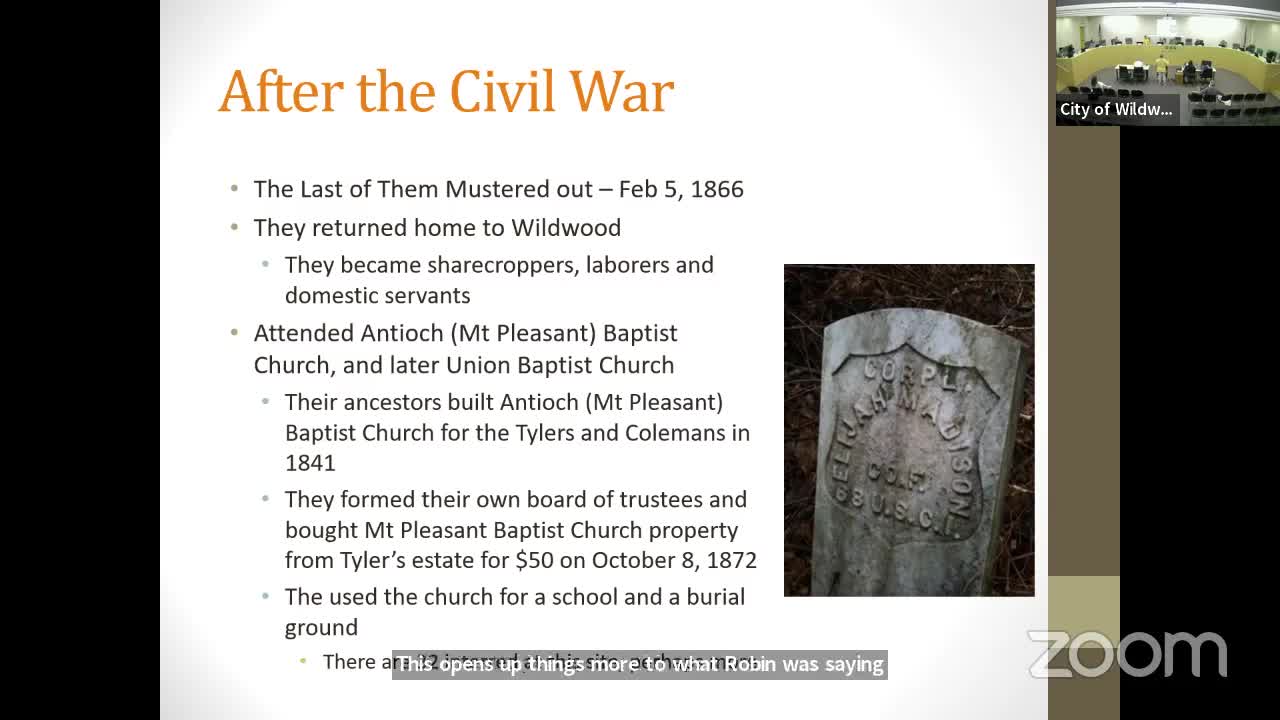Uncovering the Legacy of Enslaved Resistance and Freedom
August 22, 2024 | Wildwood, St. Louis County, Missouri
This article was created by AI summarizing key points discussed. AI makes mistakes, so for full details and context, please refer to the video of the full meeting. Please report any errors so we can fix them. Report an error »

In a recent government meeting, discussions centered on the historical significance of a cemetery linked to enslaved individuals and their descendants, highlighting themes of freedom and resistance. Participants emphasized the importance of understanding why these individuals returned to be buried in a location they had left long before their deaths, particularly in the context of industrialization that drew families away from their roots.
One speaker noted that the cemetery serves as a testament to the resilience of enslaved people, who, despite moving away for work, chose to honor their heritage by returning for burial. The church associated with the cemetery, built by enslaved hands, further symbolizes this connection to the past.
The conversation also delved into the enlistment of African Americans in the U.S. Colored Troops during the Civil War. Research is underway to uncover the pathways that led these individuals from Wildwood to Benton Barracks, where they enlisted. Notably, it was revealed that free blacks, such as the Meachams, were employed by the military to recruit enslaved men, providing them with transportation and support to join the fight.
Participants discussed the complexities surrounding the motivations of enslavers during this period. Some speculated that enslavers may have allowed their slaves to enlist as a means of financial gain, collecting bounties for their enlistment. This perspective was supported by historical accounts of enslavers seeking compensation for the loss of their slaves after the war, indicating a transactional relationship rather than one of benevolence.
Overall, the meeting underscored the need for further exploration of these historical narratives, particularly the roles of community, resistance, and the economic factors influencing the decisions of both enslaved individuals and their enslavers during a tumultuous period in American history.
One speaker noted that the cemetery serves as a testament to the resilience of enslaved people, who, despite moving away for work, chose to honor their heritage by returning for burial. The church associated with the cemetery, built by enslaved hands, further symbolizes this connection to the past.
The conversation also delved into the enlistment of African Americans in the U.S. Colored Troops during the Civil War. Research is underway to uncover the pathways that led these individuals from Wildwood to Benton Barracks, where they enlisted. Notably, it was revealed that free blacks, such as the Meachams, were employed by the military to recruit enslaved men, providing them with transportation and support to join the fight.
Participants discussed the complexities surrounding the motivations of enslavers during this period. Some speculated that enslavers may have allowed their slaves to enlist as a means of financial gain, collecting bounties for their enlistment. This perspective was supported by historical accounts of enslavers seeking compensation for the loss of their slaves after the war, indicating a transactional relationship rather than one of benevolence.
Overall, the meeting underscored the need for further exploration of these historical narratives, particularly the roles of community, resistance, and the economic factors influencing the decisions of both enslaved individuals and their enslavers during a tumultuous period in American history.
View full meeting
This article is based on a recent meeting—watch the full video and explore the complete transcript for deeper insights into the discussion.
View full meeting
